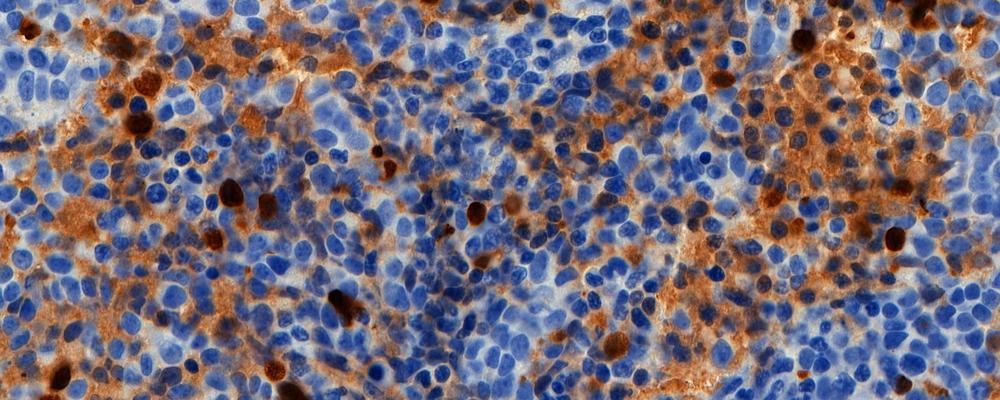Link directly to the doctoral thesis in GUPEA
ABSTRACT
Today, about half of the children diagnosed with high-risk neuroblastoma (HR-NB) survive due to considerable treatment improvements during the last decades. However, there is still much to be done for the other half who are not cured with current treatments. In addition, children with HR-NB often have metastatic spread at diagnosis, requiring systemic treatment.
HR-NBs have some specific biological characteristics that can be targeted for treatment systemically. For example, ALK encodes for the anaplastic lymphoma kinase receptor found mutated in about 15% of HR-NBs. Another example is somatostatin receptors (SSTRs), expressed between 60-90% in all NBs. These SSTRs can be targeted with 177Lu-labeled somatostatin analogs (e.g., 177Lu-octreotate and 177Lu-octreotide). In addition, patients with SSTR-overexpressing gastroenteropancreatic neuroendocrine tumors (NETs) are treated with 177Lu-octreotate. However, the usefulness of 177Lu-labeled somatostatin analogs in HR-NB patients has yet to be thoroughly investigated.
The aim of this work was to evaluate the therapeutic usefulness of 177Lu-labeled somatostatin analogs from studies on HR-NB cell lines and HR-NB xenograft mouse models.
Experiments performed on two different HR-NB cell lines demonstrated high specific binding and internalization of 177Lu-octreotate compared to other cell lines of various tumor types. This led to further studies in mouse models. NB-bearing BALB/c nude mice were administered different amounts of 177Lu-octreotate or 177Lu-octreotide, and the biodistribution was studied in various tissues. Biodistribution data analysis demonstrated a relatively high tumor uptake in all three investigated HR- NB mouse models compared with similar studies in other NET mouse models, both for 177Lu-octreotate and 177Lu-octreotide. Dosimetric estimations showed high absorbed dose to tumor tissue.
Subsequent studies included various treatment regimens. In these studies, curative amounts of 177Lu-octreotate or 177Lu-octreotide were administered as single injections, fractionated, or combined with the ALK- inhibitor lorlatinib. Therapeutic effects were determined from tumor volume measurements. In addition, the transcriptional response of specific genes involved in apoptosis was studied using qPCR. Despite high uptake and absorbed dose to tumor, treatment with single injections of 177Lu- octreotate or 177Lu-octreotide led to modest therapeutic effects, where 177Lu-octreotide caused a more substantial anti-tumor effect. In addition, fractionation with 177Lu-octreotate resulted in prolonged survival. However, a synergistic effect was observed when combining lorlatinib and 177Lu-octreotide for the tumor with ALK mutation. The combination treatment also led to an elevated apoptotic transcriptional response.
In summary, this thesis demonstrates that 177Lu-labeled somatostatin analogs can be beneficial in the treatment of patients with disseminated HR-NBs overexpressing SSTRs. However, since many HR-NBs may have specific mutations or amplifications, a combination with other drugs (e.g., lorlatinib) might be needed to overcome potential radioresistance and to enhance the anti-tumor effects.
